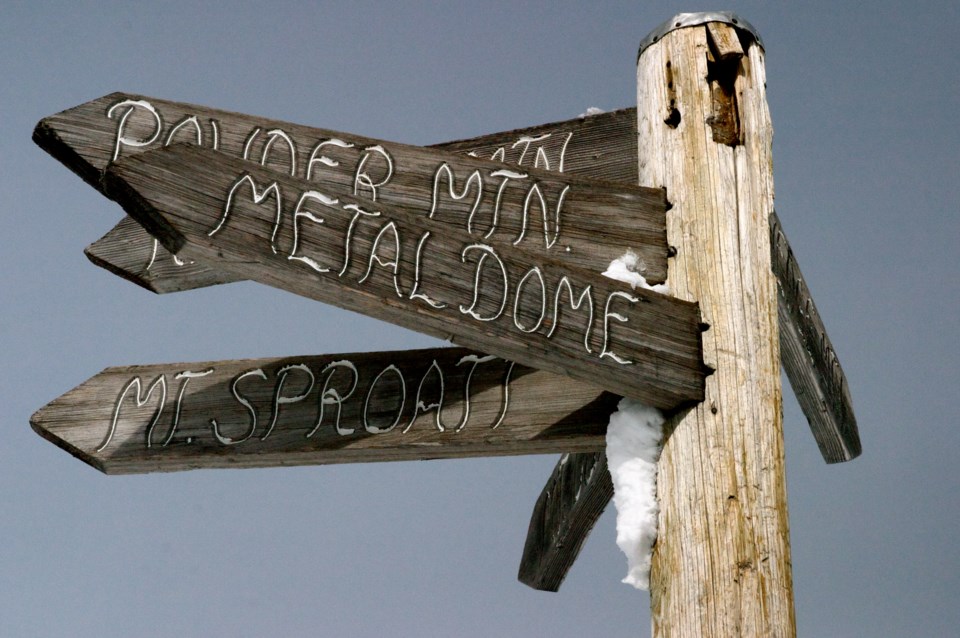When I reflect upon the names of key places in my life it becomes apparent that the landscape of my identity is masculine.
I am a woman resident of Sackville, N.B., who hails from Saint Thomas, Ont. and attended schools named after Tom Longboat and Horatio Herbert Kitchener.
As a scholar who studies place names, I have been identifying how marginalized groups — from women and Indigenous people to people of colour and newcomers — are problematically represented by the status quo, especially in a settler-colonial context.
Unequal naming practices
Women rarely come from places named after women, and the exceptions usually commemorate us differently than men. Eighteen places in Canada are named for the s-word — such as the community of Squ-w Cap in the Parish of Eldon, N.B., population 674, 315 who are women and 280 of whom are Indigenous.
Few names commemorate powerful women. There are 13 Reginas in Canada according to the country’s place name authority, the Geographical Names Board of Canada (GNBC). There are also 12 elevations named for breasts, such as British Columbia’s The Nipples and Concubine Peaks, apparently named for the “royalty theme” of the region’s toponymy.
Other places commemorate wives for their husbands’ accomplishments. Lady Franklin Bay, Nvt. and Lac de la Vieille-Ménard, Que. are two examples.
Places named after saints make up the most significant cohort of women-inspired names in Canada. Data on this subject has never been collected. However, Québec’s national place-name database provides some insight. The database allows us to find almost 2,500 places with French Sainte, denoting female saints, and nearly 10,000 named for male saints (Saint).
This reflects the fact that before the 20th century only 20 per cent of saints were women.
Those who picked the names were predominantly men, which is still true today. While the GNBC is headed by a woman, 12 of Canada’s territorial and provincial toponymist offices are headed by men.
Names connect us to places and forge our identities — after all, we all come from somewhere. But names can also reinforce colonial and patriarchal narratives. Male place names are considered historical and traditional, rather than exclusionary, thereby rooting the Macdonalds, Ryersons and Cornwallises to this nation and its colonial history, which was written by, for and about men.
Creating inclusive policies
To address inequality across Canada’s toponymic landscape, naming authorities at all levels must craft policy to address the underrepresentation of Canada’s largest demographic cohort. While renaming places like Squ-w’s Tit points to systemic oversights in policy and practice, commemorative names continue to overwhelmingly disfavour female humanity.
In March 2022, Ontario MP Charlie Angus proposed that Ottawa’s Charlotte St. be renamed in honour of Ukrainian president Volodymyr Zelensky. The motion was unanimously supported by parliament.
Named for George IV’s daughter, the street also celebrates Ottawa’s first woman mayor, Charlotte Whitton. Whether named for an elite woman or one devoted to public service, Charlotte St. is symbolic of the small number of places commemorating women that should be protected. It is also representative of the important policy work that corrects the underrepresentation of designated groups.
Many newer policies specify how marginalized groups will be prioritized or existing names reassessed for offensive connotations.
Women must inform Canada’s naming future
But policy alone may not be enough to deal with gender inequality. In Calgary, the ability to sponsor names means that corporations, primarily owned by wealthy men, can buy names that make their way onto park and street signs.
Philanthropy is no different, with donors’ male names projecting from new buildings on university and hospital buildings across this country, alongside institutions’ names — from McGill to Simon Fraser and Mount Allison universities.
Beyond policy designed to address gender inequality, we need to implement a moratorium on naming any future place after men at the provincial, territorial and municipal levels. Universities, hospitals and other organizations must develop similar policies.
The GNBC has three advisory positions that represent First Nations, Inuit and Métis communities. The creation of a gender-equality advisor position is also urgently needed. Similar advisors should be recruited in the provincial and territorial toponymy offices as well.
The status quo is not good enough. There are more women in this country than men, yet far fewer place names referencing people relate to women. And that’s despite the fact that we all have generations of accomplished women in our families.
The time has come for us to celebrate women politicians, community members, scholars, celebrities and athletes — and to see their names in the communities we call home.
![]()
Lauren Beck receives funding from the Social Sciences and Humanities Research Council and has held funded fellowships at the Library of Congress, American Geographical Society Library, and the James Ford Bell Library for place name research.



.jpg;w=120;h=80;mode=crop)